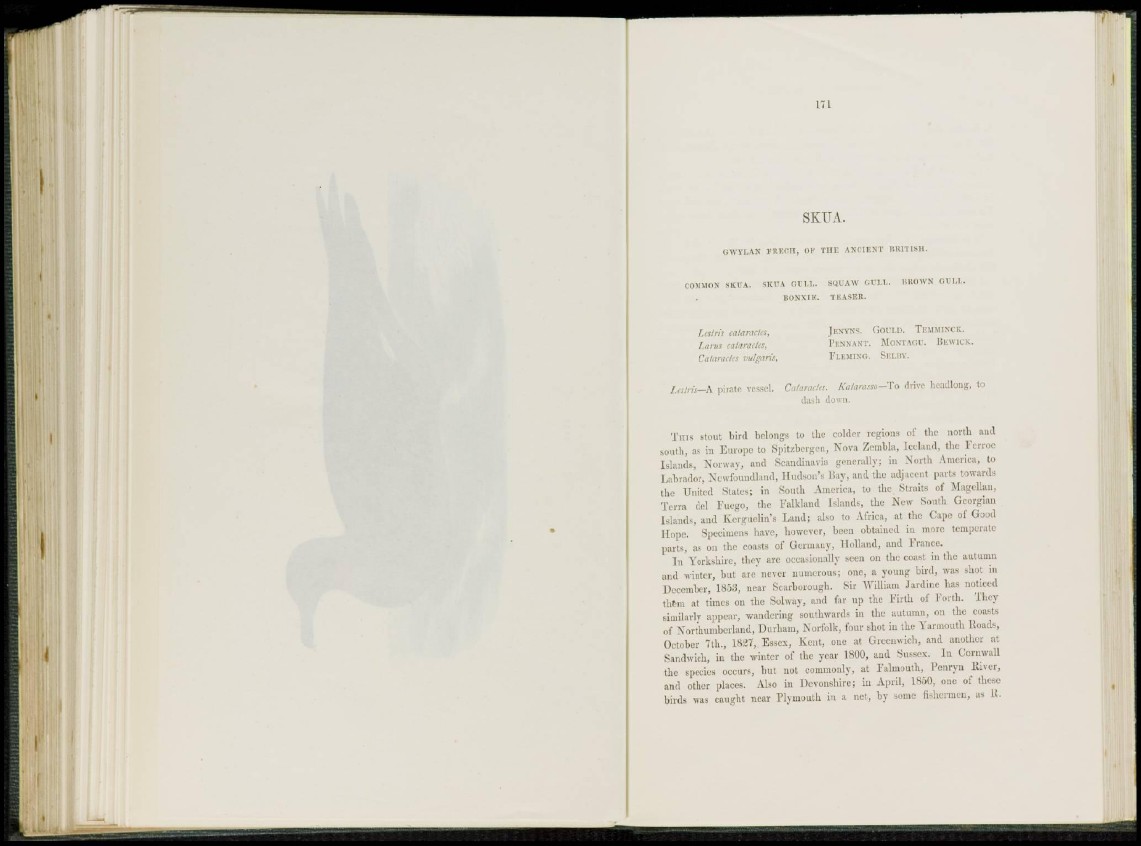
•
S K U A .
GWYLAN FRKCH, OP THE ANCIENT BRITISH.
COMMON SKUA. SKUA GILL. SQUAW GULL. BROWN GULL.
RONNIE. TEASER.
Lesiris calaractes, JENYNS. GOULD. TEMMINCK.
Larus calaractes, PENNANT. MONTAGU. BEWICK.
Ca/aractcs -•ulgaris, FLEMING, SELUY.
Lesiris—A pirate vessel. C'</fametis. Katamsso—To drive headlong, to
dash down.
T i n s stout bird belongs to the colder regions of the north and
south, as in Europe to Spitsbergen, Nova Zembla, Iceland, the Ferroe
Islands, Norway, and Scandinavia generally; in North America, to
Labrador, Newfoundland, Hudson's Bay, and the adjacent parts towards
the United Slates; in South America, to the Straits of Magellan.
Terra del Fuego, the Falkland Islands, the New South Georgian
Islands, and Kerguelin's Land; also to Africa, at the Cape of Good
Hope. Specimens have, however, been obtained in more temperate
parts, as on the coasts of Germany, Holland, and France.
I n Yorkshire, they arc occasionally seen on the coast in the autumn
and winter, but are never numerous; one, a young bird, was shot in
December, 1853, near Scarborough. Sir William Jardinc has noticed
them at times on the Solway, and far up the Firth of Forth. They
similarly appear, wandering southwards in the autumn, on the coasts
of Northumberland, Durham, Norfolk, four shot in the Yarmouth Roads,
October 7th., 1827, Essex, Kent, one at Greenwich, and another at
Sandwich, iu the winter of the year 1800, aud Sussex. In Cornwall
the species occurs, but nut commonly, at Falmouth, Penryn River,
and other places. Also in Devonshire; in April, 1850, one of these
birds was caught near Plymouth in a net, by some fishermen, as R.